Like most Alaskan summers, July has been jam-packed with exploration and new experiences. Many things were learned, and many places were visited.
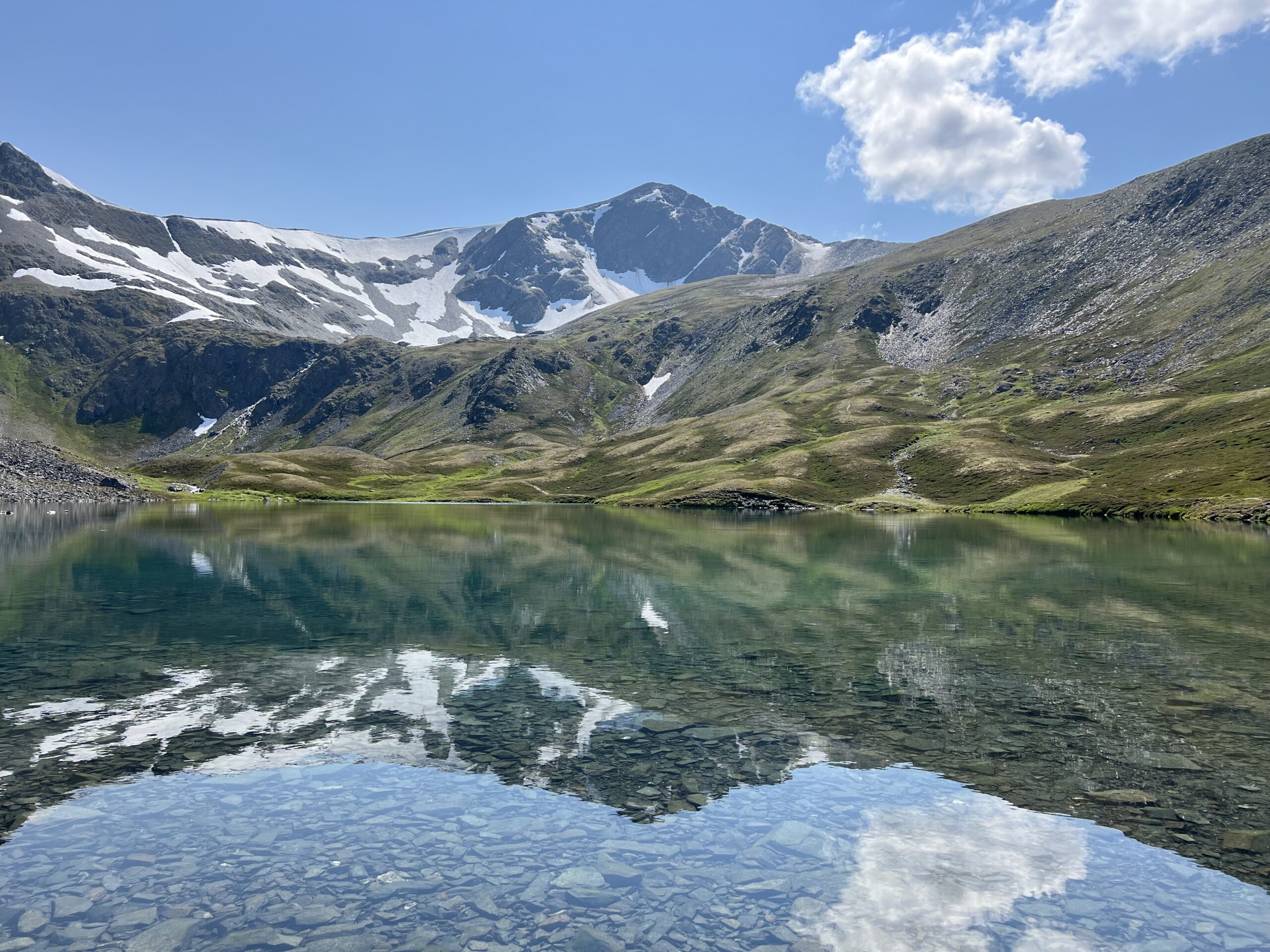
At the beginning of the month, I spent a week getting lost in graminoids and taking deep dives into grass morphology to improve my identification skills. On the first day of my self-guided grass class, I went out to find some grasses to practice keying, and I stumbled upon a grass I had encountered during my first week in this position. Its name was a mystery to me, but he immediately received a loving nickname—fuzzy boi—a name well earned due to its incredibly soft pubescent culm and leaves. Fuzzy Boi feels like velvet but is not velvet grass (Holcus lanatus), so I needed to give him a suitable nickname so as not to confuse the two. I spent quite a bit of my grass intensive attempting to identify this special grass.
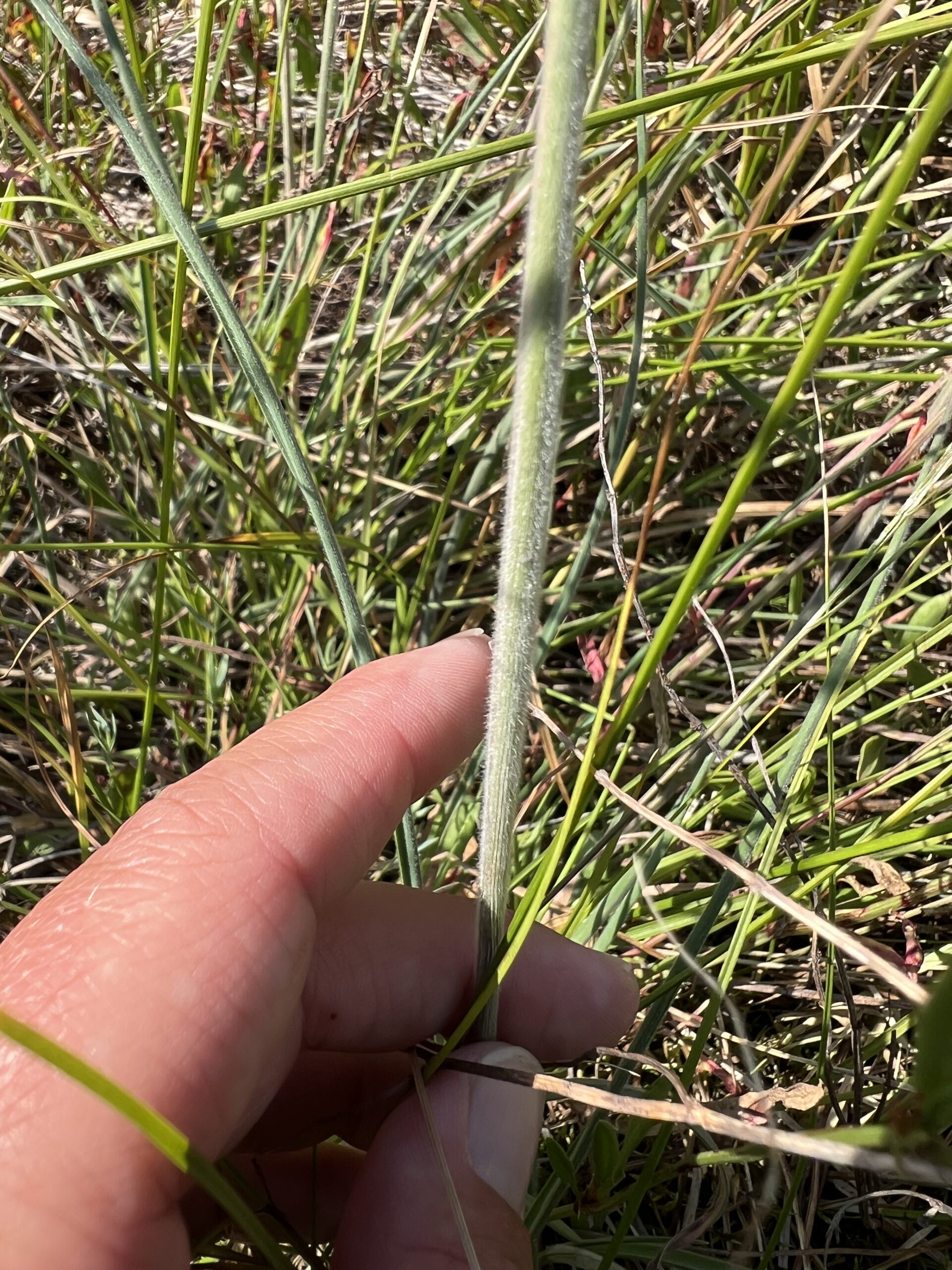
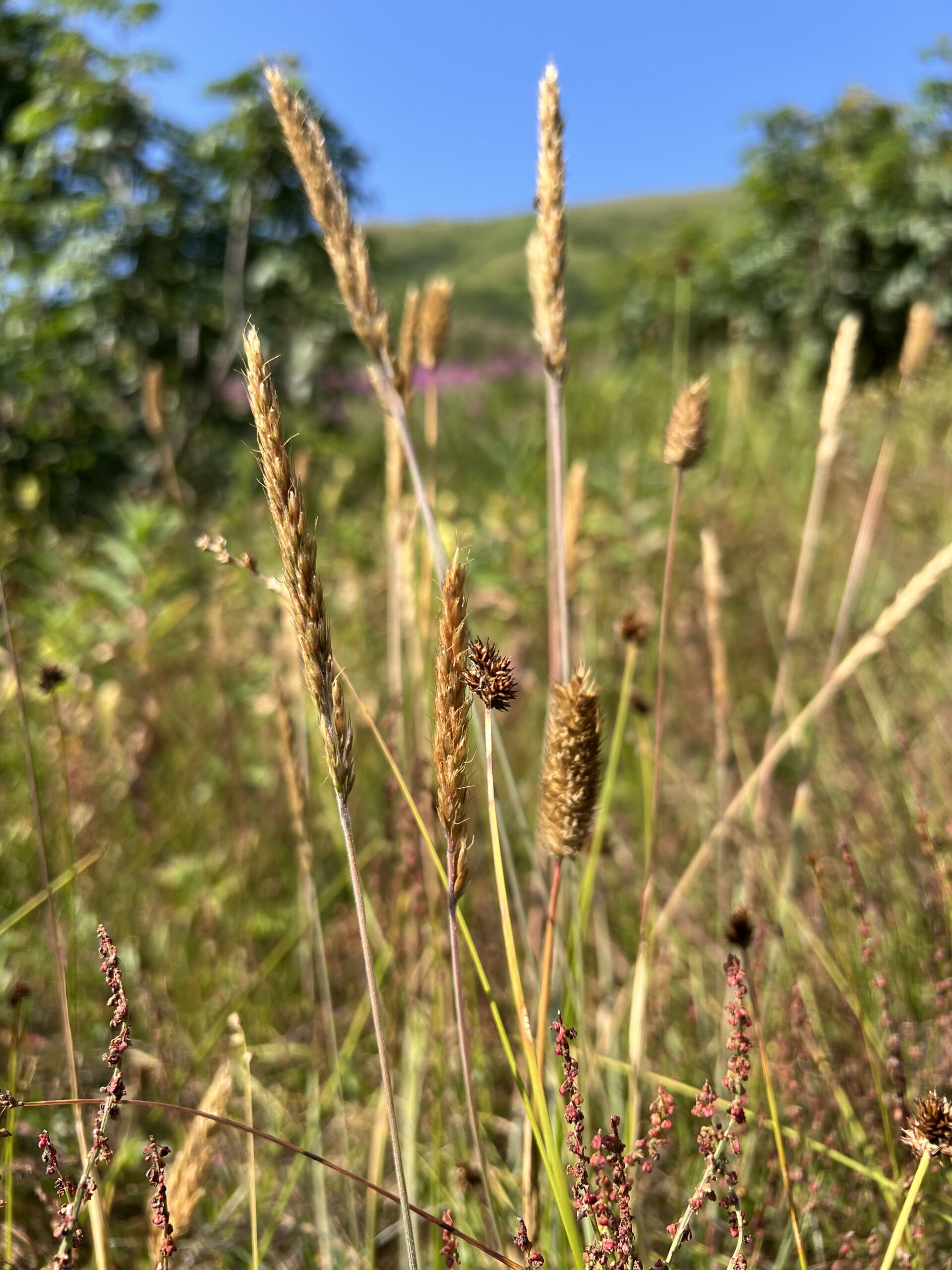
Despite the challenge, the process of identifying grass species was a rewarding experience. After numerous attempts and some hair-pulling, I was overjoyed to correctly identify ‘fuzzy boi’ as Trisetum Spicatum alaskanum, also known as spike trisetum or spike false-oat. (Be on the lookout for my petition to change its name to Fuzzi boi.) This was a significant milestone in my learning journey.
As I did my silent victory dance before the microscope, I knew I needed confirmation to celebrate genuinely. If I was correct, I had found one of our tricky target grass species for seed collection! Later that week, I went over the grasses I had keyed out with my mentor Peter, and much to my astonishment, I had correctly keyed out several of the species, including fuzzy boi. Finally, I was sure of his real name! Developing the ability to use and understand a dichotomous key in the short period since our training in Chicago, I became astounded by how rapidly the skills I am cultivating in this internship are coming to fruition.
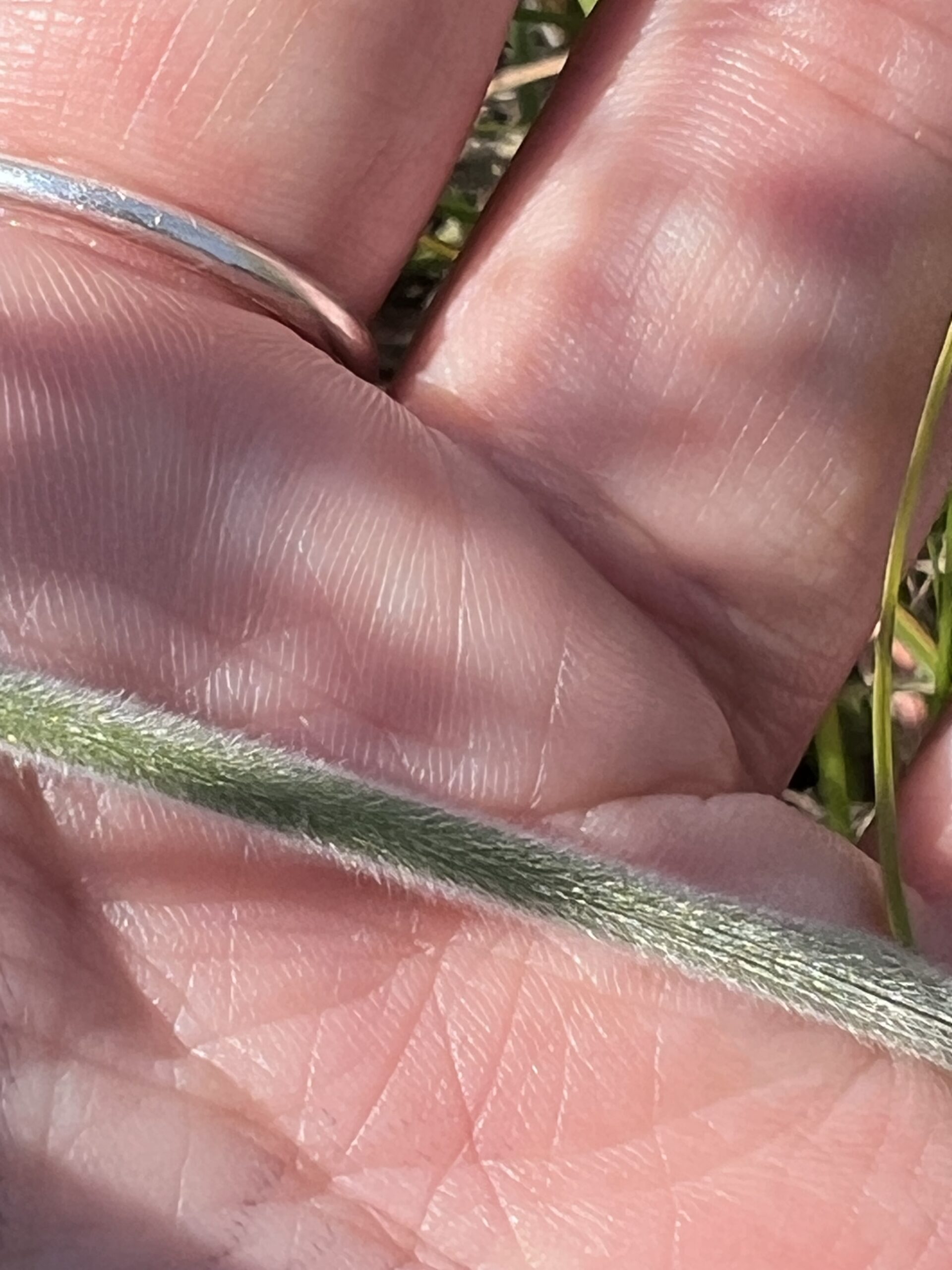
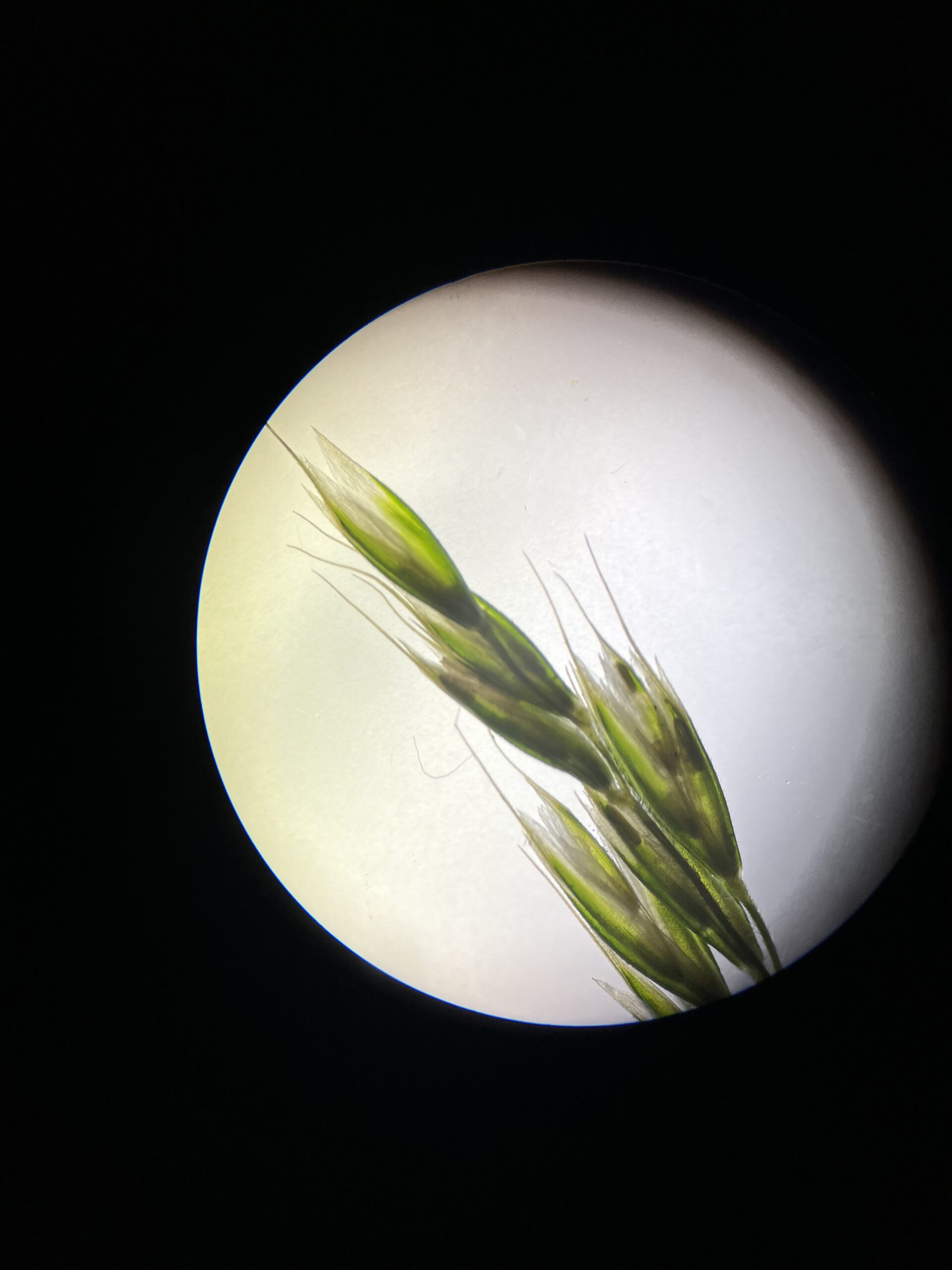
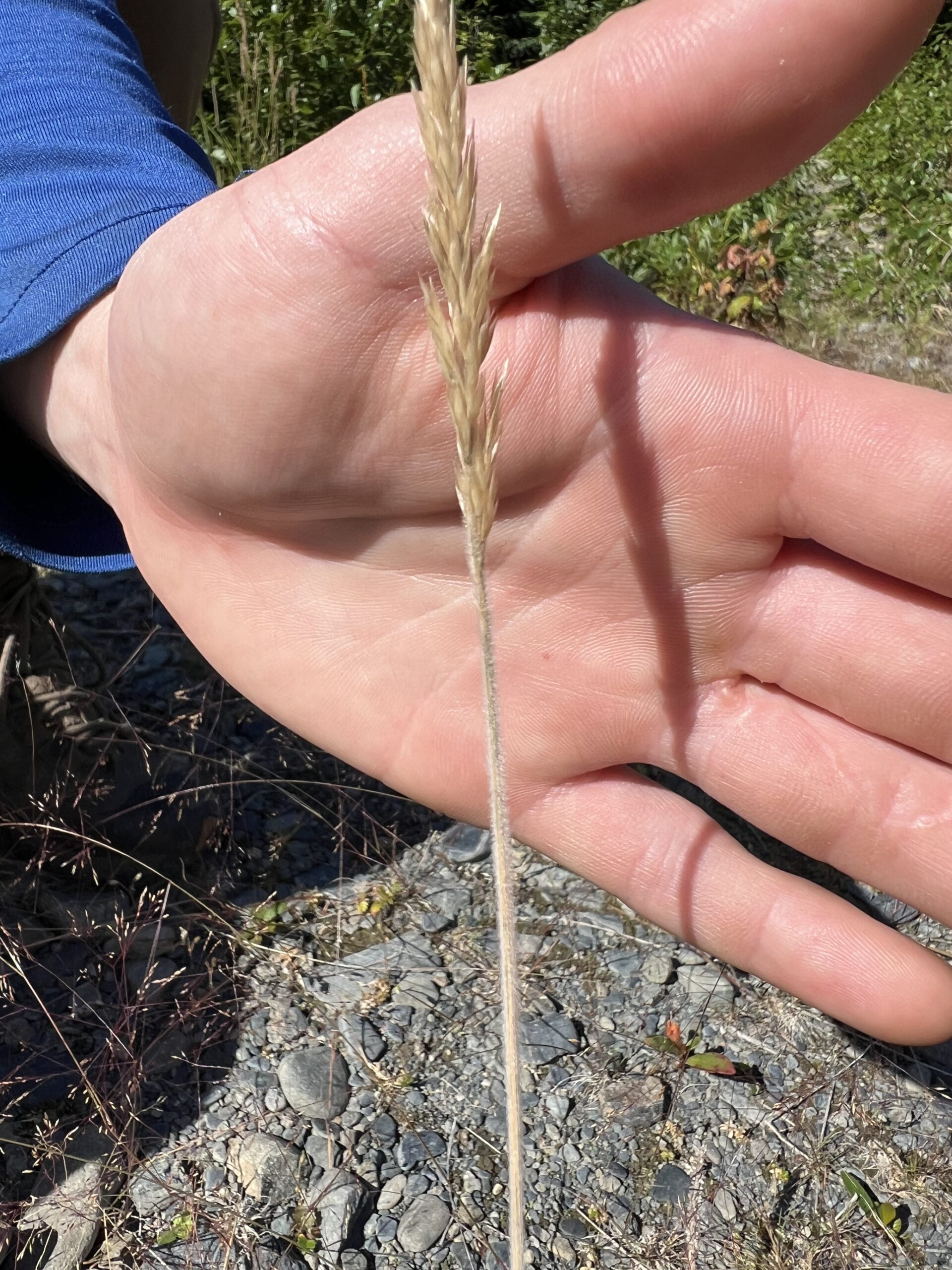
I have written a series of Haikus in honor of my newfound favorite grass; enjoy.
-An Ode to the Fuzziest of Boys-
Hairy bluish-green,
Silvery sheen to your fuzz,
Culm soft to the touch,
Who are you?
Softer than an otter pelt,
You are most unique,
I am drawn to you,
Named Trisetum spicatum?
No, my Fuzzy boi.
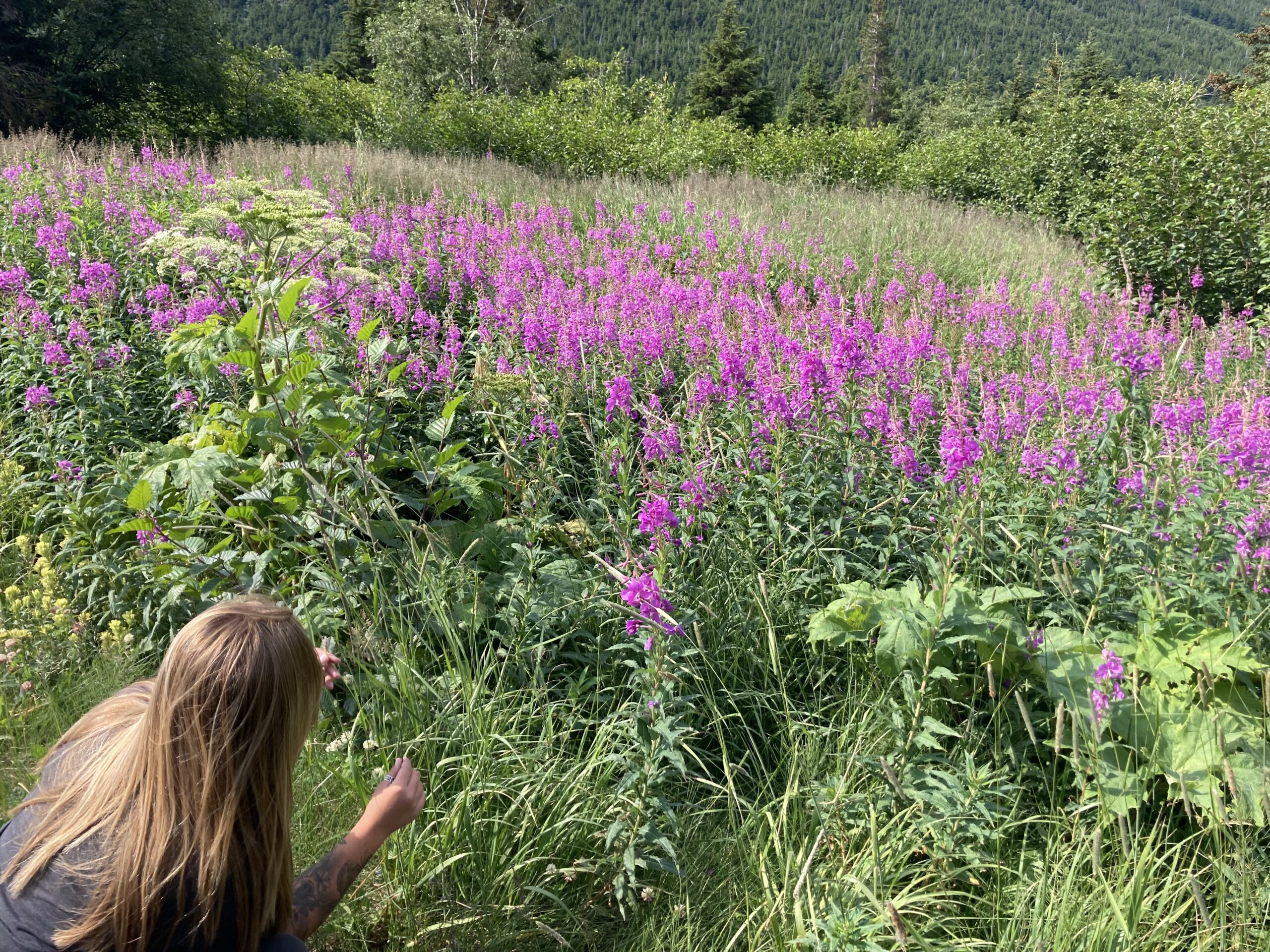
Throughout July, I have realized that I am innately drawn to species of plants that possess some type of fuzz. I have always felt pulled to the fluffy cotton grasses and spikey drosera varieties growing in muskeg habitats. Cotton grasses are especially amusing, as they look like the Truffula trees in the Lorax. The several varieties of cotton grass species belong to the Eriophorum and Trichophorum genera within the Cyperaceae family. A fact that surprised me to learn, as I would have expected them to all fit into the same genus.
Since several cotton grass species grow in muskeg, they are classified as wetland species. Due to the restoration project that most of our seeds will be going to a riparian habitat, we can explore any species in the Army Corps of Engineers list of wetland species as an option for seed collection. My love of Eriophorum angustifolium (tall cotton grass) resulted in my advocating for it to be added to our target species list this month. We have added several of my beloved muskeg species to our list, including Fritillaria camschatcensis (Chocolate lily), Comarum palustris (Marsh cinquefoil), and Mentanthes trifolia (Buckbean).
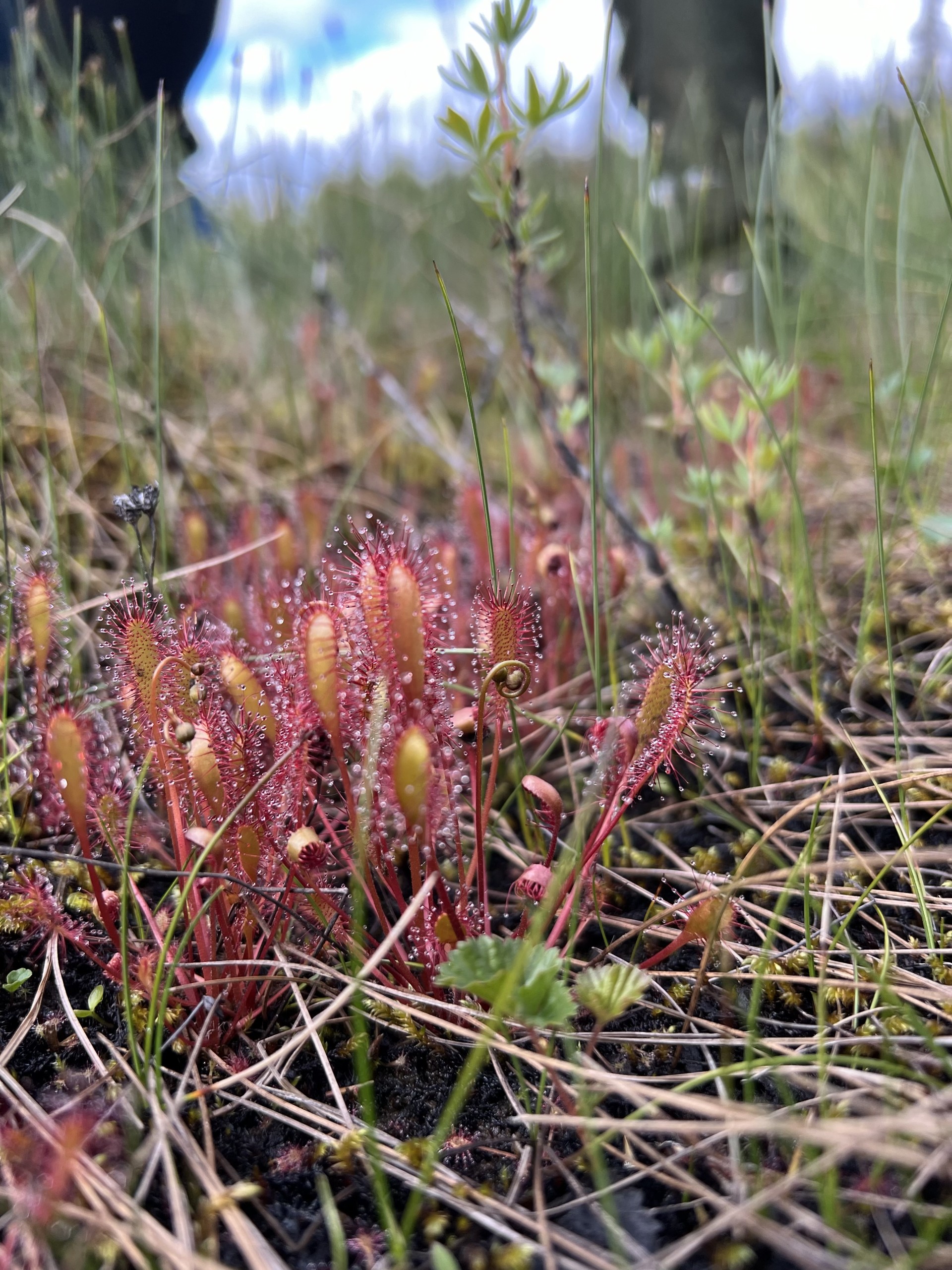
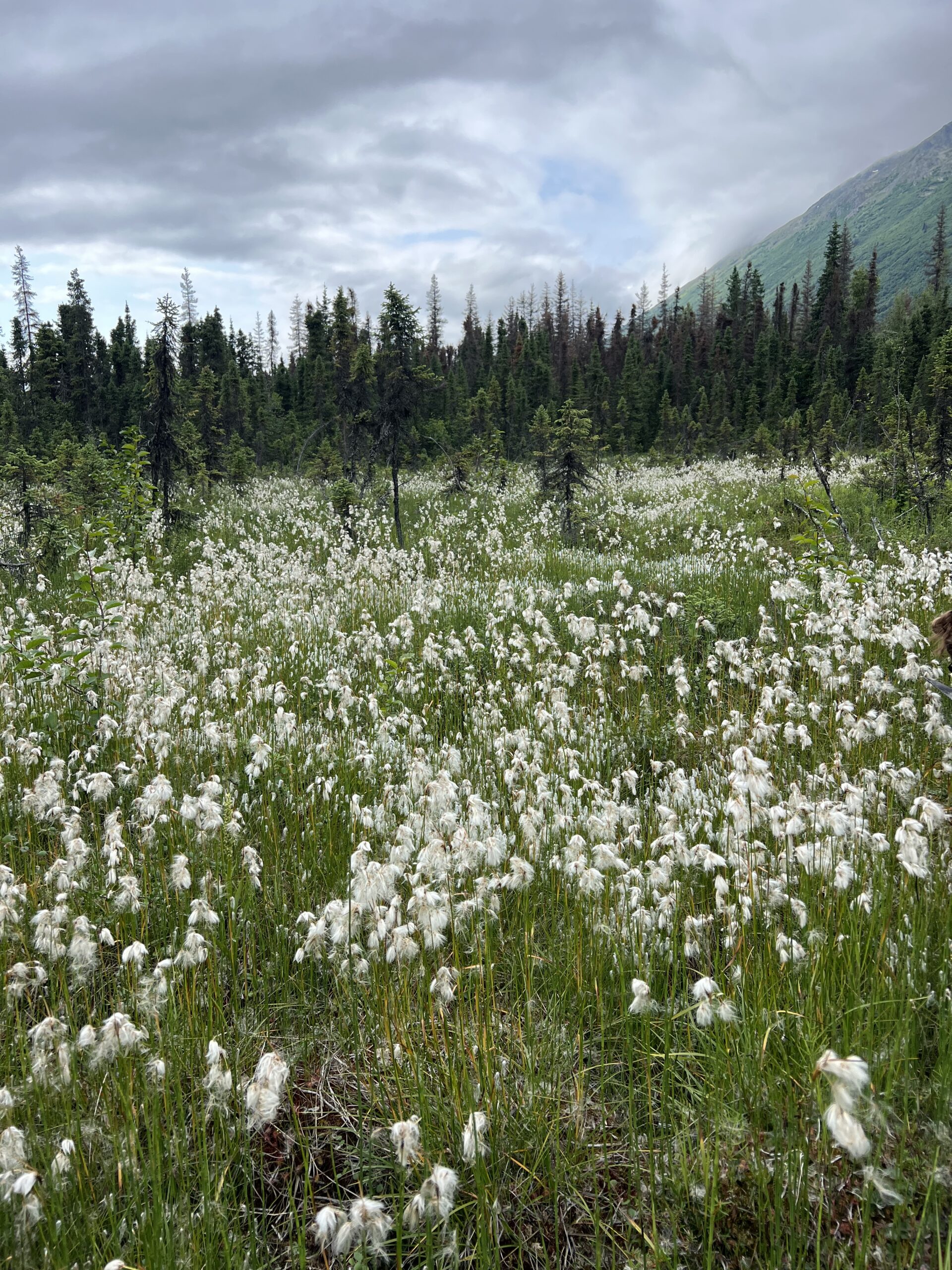
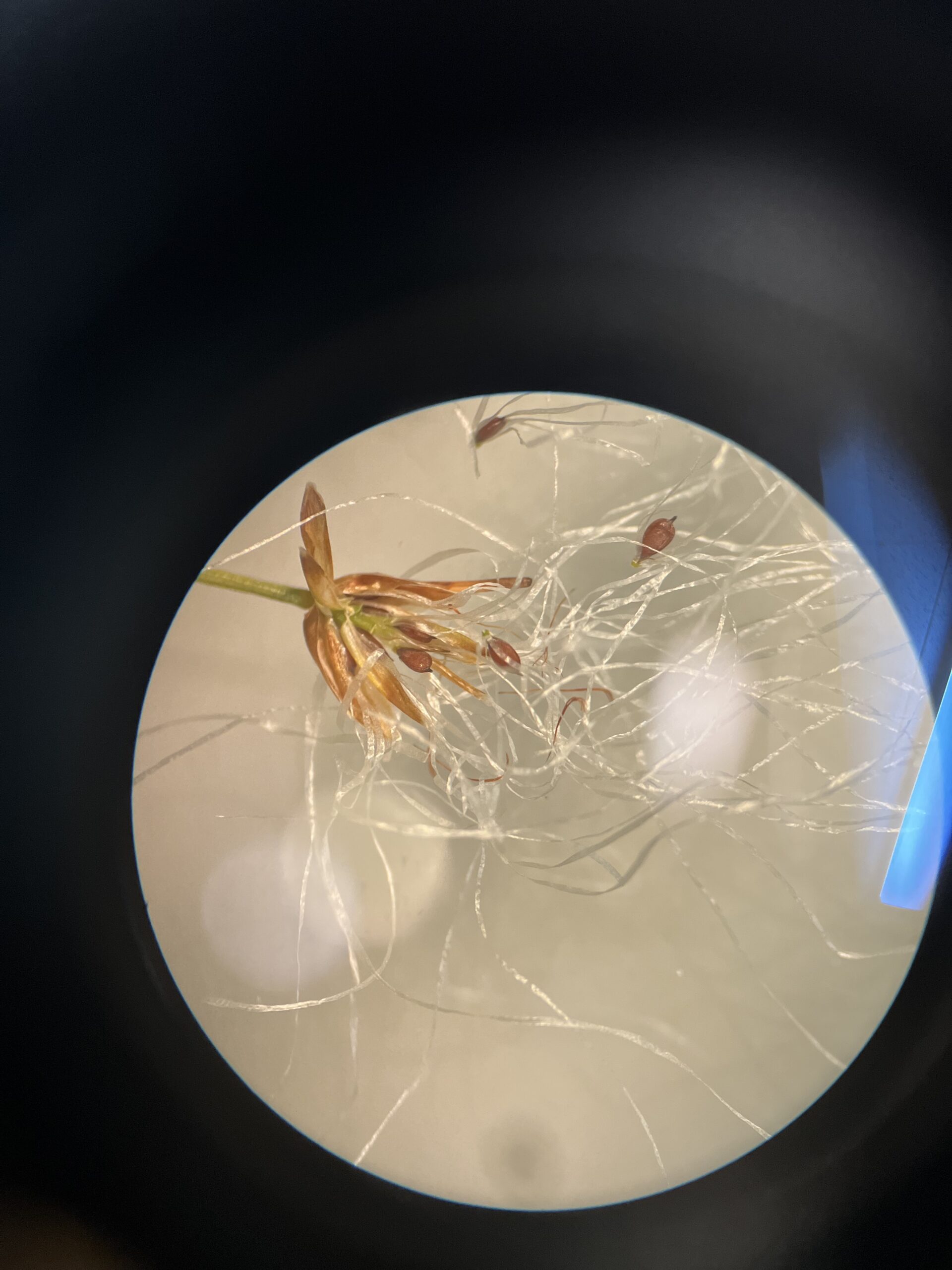
The same week as my grass intensive, I was lucky enough to tag along with the wildlife ecology and spruce beetle timber crews in search of a rare grass species, Festuca occidentallis, in two units within our forest. On this excursion, I was lucky enough to pick the brains of several incredibly knowledgeable people about local botany. Through that experience, I was able to practice ID with confirmations from more experienced botanists while getting to ask endless questions about the species around us. My favorite answer to my questions was, “You can tell because of the way it is.” This excursion occurred in a unit ripe with dense populations of many of our target species, enabling me to map out several potential collection populations while rapidly gaining knowledge!
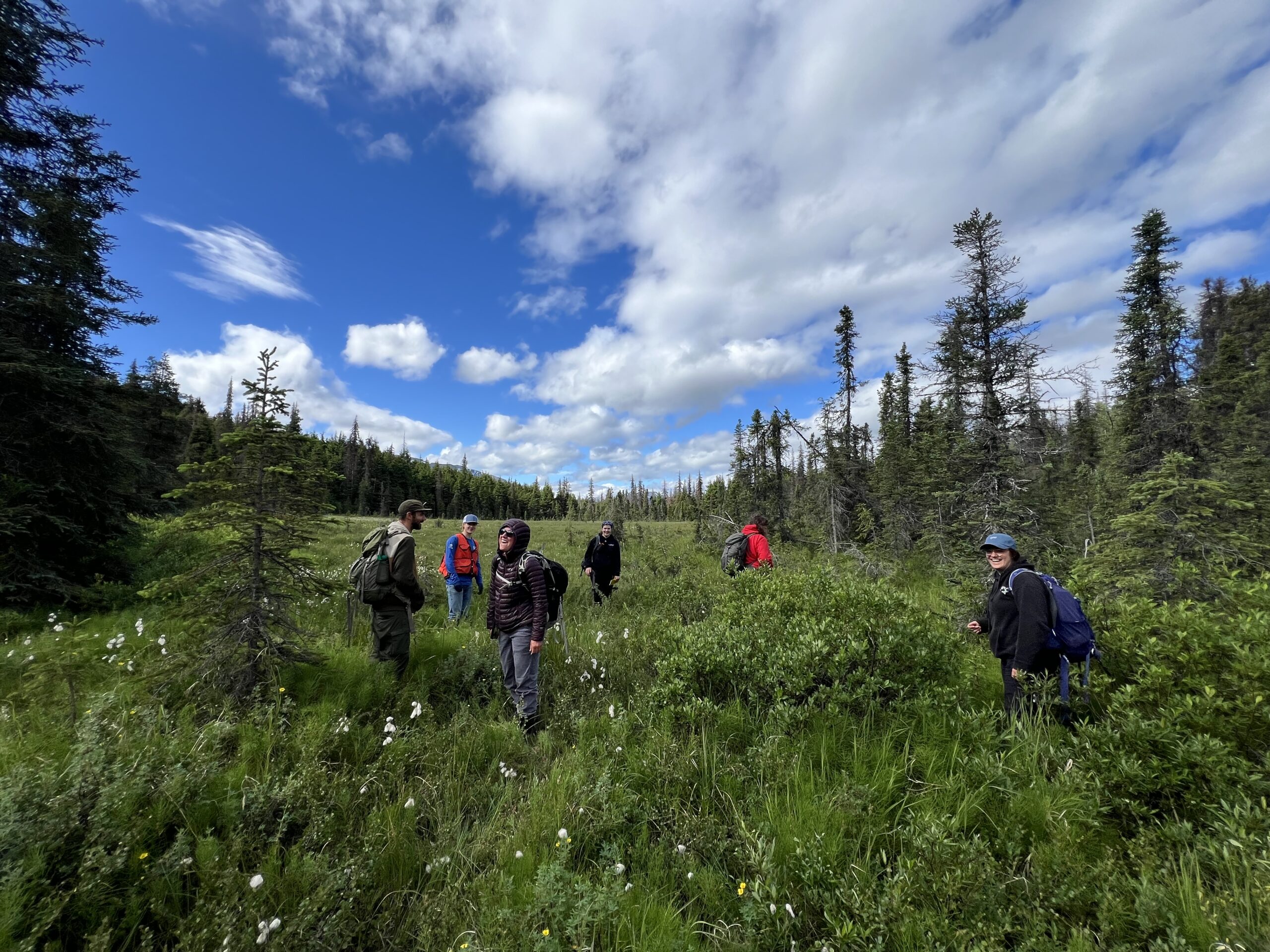
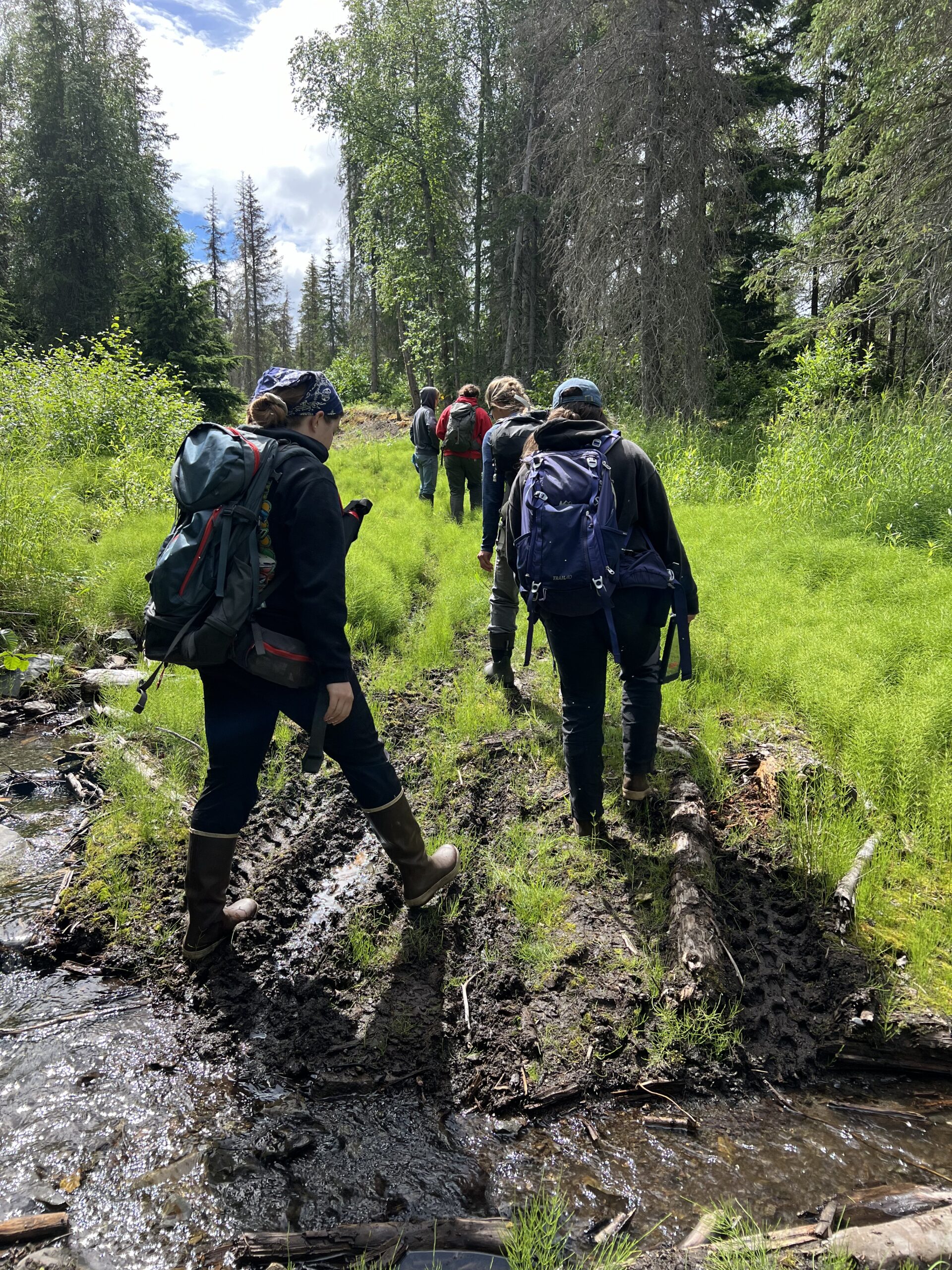
Unfortunately, the week following my deep dive into grasses was a week away from the excitement of the Chugach National Forest, as I had to travel across the country for family matters. I was worried I would lose all of the knowledge I had obtained thus far in my time away. I found myself looking for familiar faces (plants) on the east coast and keeping up on my graminoid morphology.
Upon returning to the Chugach, I quickly realized how much information was preserved in my mind and how useful my notes would be for any information I lost to the Atlantic Ocean. The week of my return brought scouting mission after scouting mission. It was one of the most exciting and fun weeks of work in my life! We met several of the last few species on our target list in person, found some juicy pockets full of large populations of several species to monitor for collection, and had some insane views. My co-intern Maggie and I sought to find as many potential seed collection populations as possible. This mission brought us to some gorgeous locations, many of which were full of dense populations of target species such as Menanthes trifoliata, Eriophorum angustifolium, Mertensia paniculata, Polemonium acutiflorum, Rhinanthus minor, and many more. The most fruitful of all locations was beside a rest stop I had visited many times, the Turnagain Pass rest area. It is a common stop for travelers heading south from the Anchorage area to anywhere on the Kenai Peninsula. Although this area holds a slight significance to me, I hadn’t considered the immense biodiversity of the meadows below the mountains before this internship. I had always been focused on the mountains as I passed by. In fact, Turnagain Pass is where I fell in love with mountains in an epiphany at 14 years old.
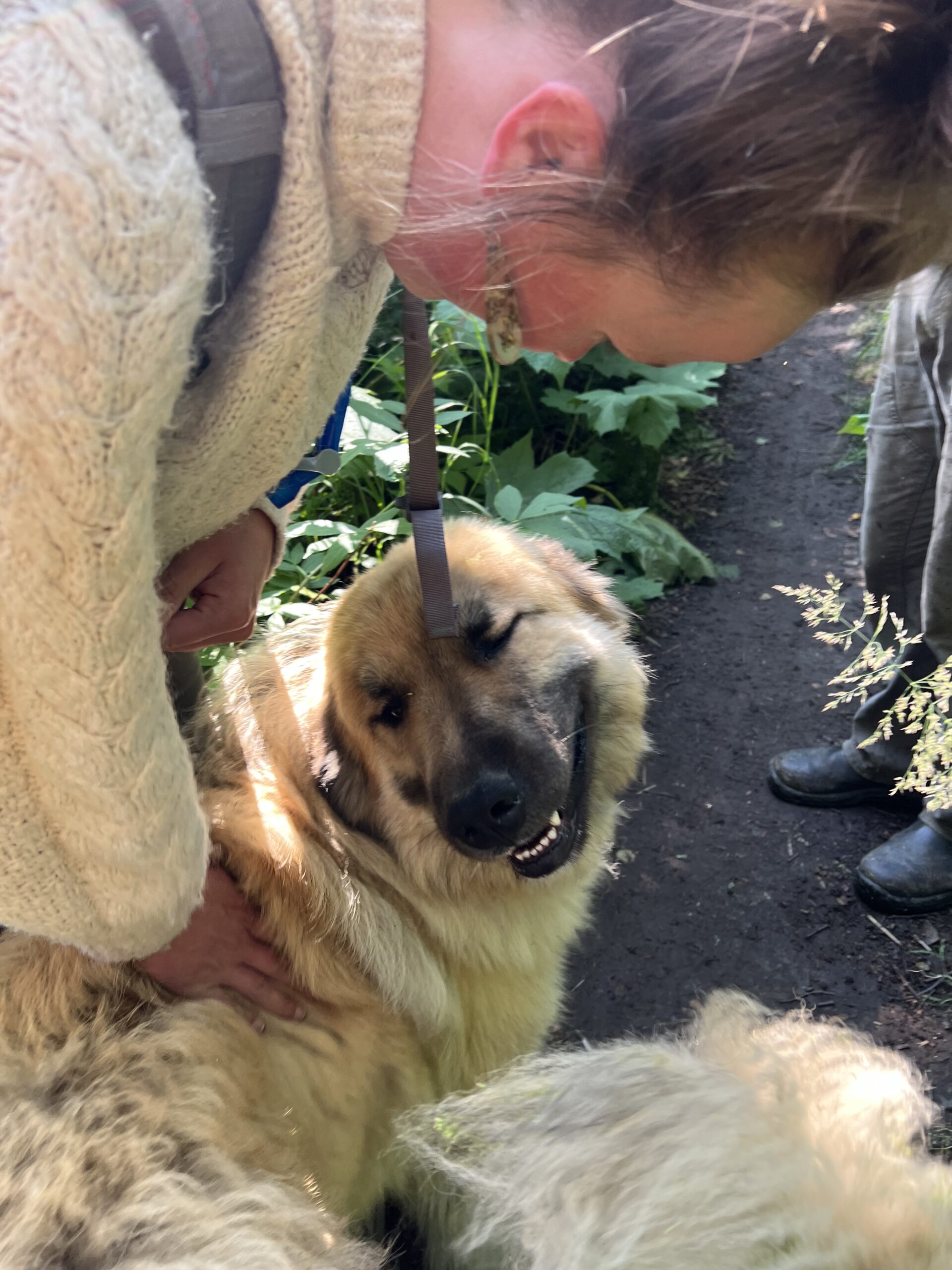
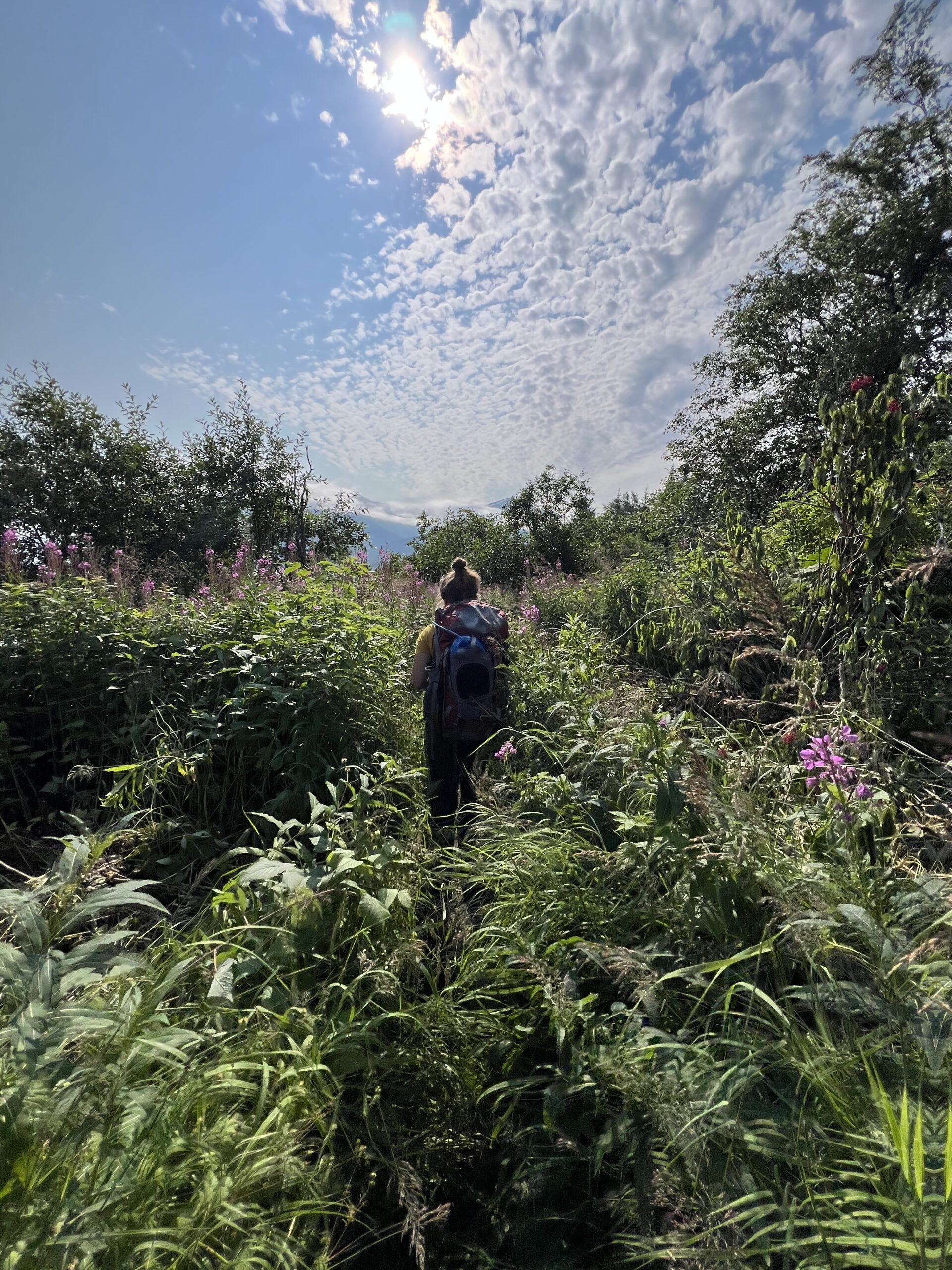
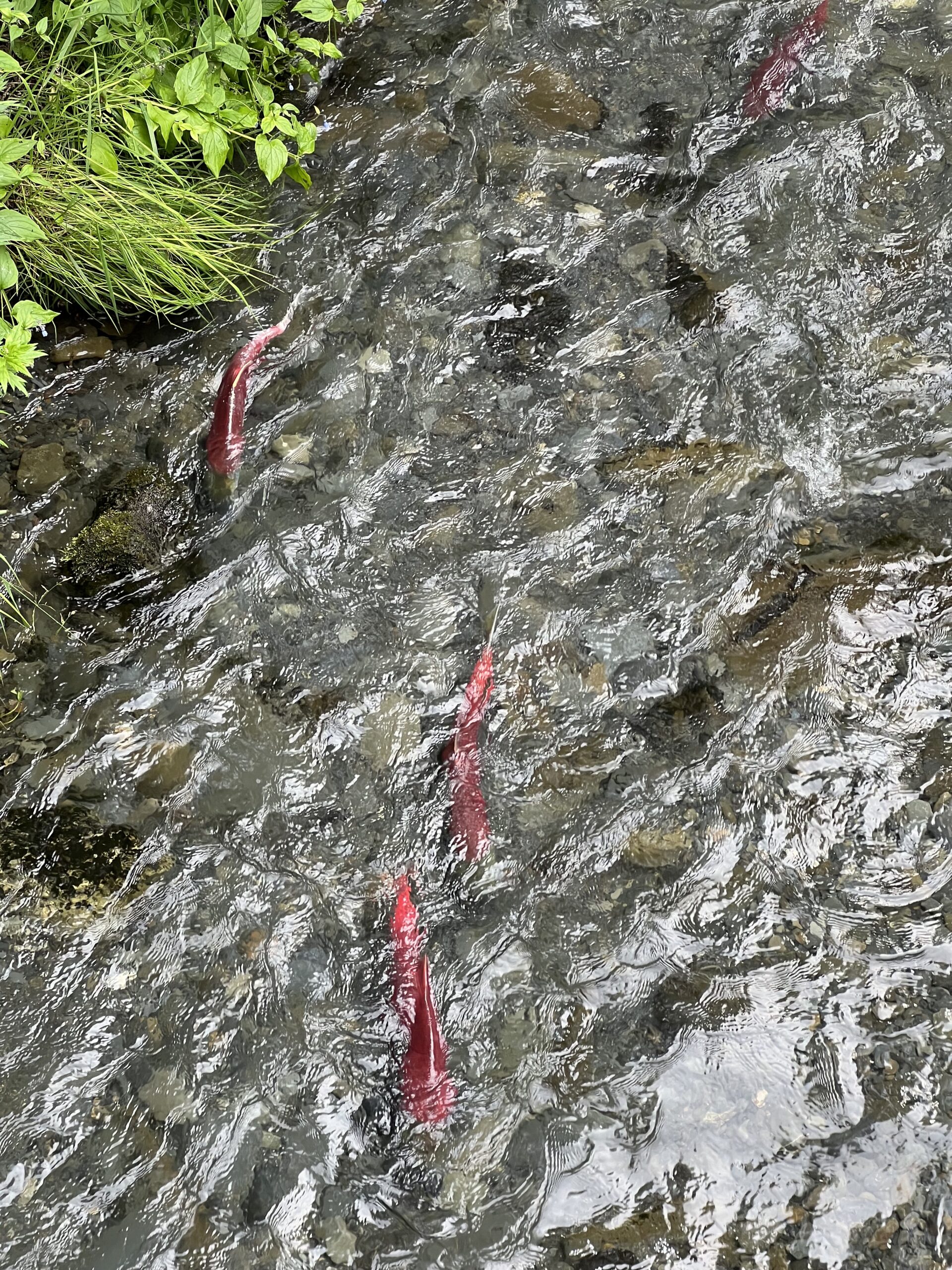
Through this internship, I have often been reminded of how valuable it is to look into the small things. It is easy to overlook the beauty that is right in front of you, whether that beauty is in the form of a biodiverse meadow being overshadowed by towering mountains, the tiny little stigmas within the floret of grass, or the soft and fuzzy culm of a grass you never noticed before. Don’t forget to take a moment to appreciate the little things.
